42 dv on food labels
Frequently Asked Questions for Industry on Nutrition Facts Labeling ... Vitamin A 2Micrograms RAE (mcg) 900 500 300 1,300 Vitamin C Milligrams (mg) 90 50 15 120 Calcium Milligrams (mg) 1,300 260 700 1,300 eCFR :: 21 CFR Part 101 -- Food Labeling § 101.1 Principal display panel of package form food. The term principal display panel as it applies to food in package form and as used in this part, means the part of a label that is most likely to be displayed, presented, shown, or examined under customary conditions of display for retail sale. The principal display panel shall be large enough to accommodate all the mandatory label ...
How to Read Food Labels: Your Complete Consumer Guide The rightmost column of the Nutrition Facts portion of the label gives you the percent of Daily Value (DV) of that particular food component. Most labels carry an asterisked explanation such as, "The % Daily Value (DV) tells you how much a nutrient in a serving of food contributes to a daily diet. 2,000 calories per day is used as general ...

Dv on food labels
ods.od.nih.gov › factsheets › iron-healthprofessionalIron - Health Professional Fact Sheet The DV for iron is 18 mg for adults and children age 4 years and older . FDA requires food labels to list iron content. Foods providing 20% or more of the DV are considered to be high sources of a nutrient, but foods providing lower percentages of the DV also contribute to a healthful diet. Home | Dietary Supplement Label Database (DSLD) | NIH Office of Dietary ... Use the chart to learn how many products of each supplement form are in the DSLD. To search by a specific form, click on the supplement form below. 0 10,000 20,000 30,000 40,000 50,000 Number of Labels Capsules Tablets and Pills Powders Liquids Softgel Capsules Other (e.g. tea bag) Gummies and Jellies Lozenges Unknown Bars. en.wikipedia.org › wiki › Reference_Daily_IntakeReference Daily Intake - Wikipedia Food labeling reference tables. The reference dietary intake (RDI) gives numbers based on gender and age. The Daily Value (DV) is put on the labels of food products and is meant for the general population. Daily Values. The FDA issued a final rule on changes to the facts panel on May 27, 2016.
Dv on food labels. FDA Food Label Nutrients Without a DV - Metabolic Research Center This is because it hasn't established any specific guidelines about how much a person can consume for optimal health. Food manufacturers are required to give a percentage of the daily value for protein if a product is labeled as being high in protein, or if it's specifically made for children or infants under the age of four. Avoid These... › understanding-food-labelsUnderstanding food labels - Canada.ca Find information on food labels and how to understand them. Learn about nutrition facts tables, serving size, list of ingredients, % daily value and nutrition claims. Daily Value on the New Nutrition and Supplement Facts Labels The Nutrition Facts label must list total fat, saturated fat, trans fat, cholesterol, sodium, total carbohydrate, dietary fiber, total sugars, added sugars, protein, and certain vitamins and... Daily Values (DVs) - National Institutes of Health DVs were developed by the U.S. Food and Drug Administration (FDA) to help consumers determine the level of various nutrients in a standard serving of food in relation to their approximate requirement for it. The label actually provides the %DV so that you can see how much (what percentage) a serving of the product contributes to reaching the DV.
What does percent Daily Value (DV) on food labels mean? Percent daily values (DV) are based on the requirements for an adult consuming 2,000 calories per day. Even if you are eating less or more than that, they are still useful as an indicator that a food is high or low in a certain nutrient. If a food contains less than 5% of the DV, it is considered low in that nutrient. What does dv mean on food labels? - Dane101 Percent Daily Value (DV) on the Nutrition Facts label is a guide to the nutrients in one serving of food. For example, if the label lists 15% for calcium, it means that one serving provides 15% of the calcium you need each day. DV s are based on a 2,000-calorie diet for healthy adults. What does 5 percent DV mean in food? How to Understand and Use the Nutrition Facts Label | FDA - U.S. Food ... 5% DV or less of a nutrient per serving is considered low 20% DV or more of a nutrient per serving is considered high More often, choose foods that are: Higher in %DV for Dietary Fiber, Vitamin D,... What is the difference between the RDA and the DV for vitamins and ... The DVs (Daily Values) are set by the FDA. On food and supplement labels, you will find the "%DV" listed for vitamins and minerals which are required by law to be listed.
Food Labeling: MedlinePlus With this, you can figure out if a food is high or low in a nutrient: 5% or less is low, 20% or more is high. The information on a food label can help you see how a certain food or drink fits into your overall diet. The label lists, per serving,: The number of calories. Fats, including total fat, saturated fat, and trans fat. Cholesterol. Sodium. Understand Food Labels - UF/IFAS Extension Marion County Daily Value Percentage (% DV) and Footnote (in blue): As noted in the chocolate bar's footnote "The % Daily Value (%DV) tells you how much a nutrient in a serving of food contributes to a daily diet. 2.000 calories a day is used for general nutrition advice." This simply means that the nutrient section is calculated based on a 2,000-calorie diet. Percent daily value - Canada.ca The % DV is found on the right-hand side of a nutrition facts table. It is a guide to help you make informed food choices. It shows you if the serving size has a little or a lot of a nutrient: 5% DV or less is a little 15% DV or more is a lot This applies to all nutrients with a % DV. What Is the Difference Between DRI & Daily Value? This number, called the daily value or DV, is based on the amount of each nutrient needed for a 2,000-calorie-a-day diet. You won't find the daily value on the nutrition facts label. Instead, it's...
› food › food-labeling-nutritionUse of the Term Healthy on Food Labeling | FDA Oct 07, 2022 · Claims like “healthy” on food labels can provide information to consumers to help them identify healthier food choices at a quick glance. ... 0% DV. 0% DV. 20% of total fat. Oil-based Spreads ...
FDA (US) Nutrition Label Rounding Rules - ReciPal The FDA has very specific rules covering how to round nutrition labels depending on the nutrient and its value. That's why you [hopefully!] won't see labels showing 122 Calories or 2.5% Daily Value of Fat. With so many different nutrients and numbers on a nutrition label, rounding makes it easier for consumers to digest the information on your packaging.
Food Labels Flashcards | Quizlet on a food label, the panel of nutrition info required to appear on almost every packaged food. Nutrition Education and Labeling Act of 1990 ... % Daily Value. on labels, these are for a single set of food, and are based on the daily values set for a 2,000 calorie diet. nutrient claims.
Food Labels | CDC - Centers for Disease Control and Prevention All the numbers on this label are for a 2/3-cup serving. This package has 8 servings. If you eat the whole thing, you are eating 8 times the amount of calories, carbs, fat, etc., shown on the label. Total Carbohydrate shows you types of carbs in the food, including sugar and fiber. Choose foods with more fiber, vitamins, and minerals.
Solved 21. From Food Labels: What is DV? According to FDA, | Chegg.com Expert Answer. DV in food labels refers to Percentage daily value of nutrients in one serving of the given food .This is …. View the full answer. Transcribed image text: 21.
› food › new-nutrition-facts-labelAdded Sugars on the New Nutrition Facts Label | FDA Feb 25, 2022 · Labels for foods and beverages with added sugars will list the number of grams and the percent Daily Value (%DV) for added sugars within the Nutrition Facts label.
What Does "% Daily Value" Mean on a Food or Supplement Label? The 100% Daily Value is more than what most people consume. The 100% Daily Value amount is a goal, an encouragement to increase the intake of each of these nutrients. Nutrients to limit: These are total fat, saturated fat, trans fat, cholesterol, and sodium. For these nutrients, the 100% DV is an approximate upper limit of safe consumption.
Daily Value and Percent Daily Value: Changes on the New Nutrition and ... Facts Labels Daily Value vs. % Daily Value First, let's look at how Daily Value (DV) and Percent Daily Value (%DV) work together. ... Use %DV to determine if a serving of the food is high or low ...
The Lows and Highs of Percent Daily Value on the Label 5% DV or less of a nutrient per serving is considered low. 20% DV or more of a nutrient per serving is considered high. More often, choose foods that are: Higher in dietary fiber, vitamin D,...
› food › food-labeling-nutritionChanges to the Nutrition Facts Label | FDA - U.S. Food and ... Mar 07, 2022 · Manufacturers with $10 million or more in annual sales were required to update their labels by January 1, 2020; manufacturers with less than $10 million in annual food sales were required to ...
Food Labels: Fat & Cholesterol | Home & Garden Information Center The 2015 Dietary Guidelines for Americans recommends the following intakes of fat and cholesterol every day: total fat—20 to 35% of calories, depending on age and gender (65 grams for the 2,000-calorie intake level used in the Daily Value)*. saturated fat—less than 10% of calories**. trans fat— keep as low as possible.
How to Calculate % of Daily Value on Food Labels | livestrong Step 1 Find the nutrient amount on the food label. Step 2 Look up the total daily recommended amount in the USDA Dietary Guidelines. Step 3 Divide the nutrient amount by the total daily recommended value. Step 4 Multiply by 100. Things You'll Need United States Department of Agriculture (USDA) Dietary Guidelines Food label Calculator Tip
How to Calculate Percentage DV for a Nutrient - SFGATE Divide the given amount of the nutrient by the appropriate recommended daily value found on the FDA guide. So if your item contains 300 milligrams of calcium per serving, divide 300 by 1,000, which...
How To Read Food and Beverage Labels - National Institute on Aging Or you can call the U.S. Department of Agriculture's Food and Nutrition Information Center at 301-504-5414. Understanding percent Daily Value (% DV) The percent Daily Value (% DV) tells how much a nutrient in a serving of the food or beverage contributes to a total daily 2,000-calorie diet.
› nutrition › how-to-read-food-labelsHow to Read Food Labels Without Being Tricked - Healthline Aug 19, 2020 · Reading labels can be tricky. Consumers are more health-conscious than ever, so some food manufacturers use misleading tricks to convince people to buy highly processed and unhealthy products.
Daily Value: Definition and How to Calculate It - Insider Found on the nutrition label, the daily value system tells you can help you determine if a product is high or low in particular nutrients. What does daily value mean? Daily value (DV) refers to how much of a nutrient you should consume each day based on a 2,000 calorie diet. You can find daily values for a range of nutrients on the FDA's website.
Understanding Food Nutrition Labels | American Heart Association 5 - Understand % Daily Value. The % Daily Value (DV) tells you the percentage of each nutrient in a single serving, in terms of the daily recommended amount. ... When the Nutrition Facts label says a food contains "0 g" of trans fat, but includes "partially hydrogenated oil" in the ingredient list, it means the food contains some trans ...
en.wikipedia.org › wiki › Reference_Daily_IntakeReference Daily Intake - Wikipedia Food labeling reference tables. The reference dietary intake (RDI) gives numbers based on gender and age. The Daily Value (DV) is put on the labels of food products and is meant for the general population. Daily Values. The FDA issued a final rule on changes to the facts panel on May 27, 2016.
Home | Dietary Supplement Label Database (DSLD) | NIH Office of Dietary ... Use the chart to learn how many products of each supplement form are in the DSLD. To search by a specific form, click on the supplement form below. 0 10,000 20,000 30,000 40,000 50,000 Number of Labels Capsules Tablets and Pills Powders Liquids Softgel Capsules Other (e.g. tea bag) Gummies and Jellies Lozenges Unknown Bars.
ods.od.nih.gov › factsheets › iron-healthprofessionalIron - Health Professional Fact Sheet The DV for iron is 18 mg for adults and children age 4 years and older . FDA requires food labels to list iron content. Foods providing 20% or more of the DV are considered to be high sources of a nutrient, but foods providing lower percentages of the DV also contribute to a healthful diet.

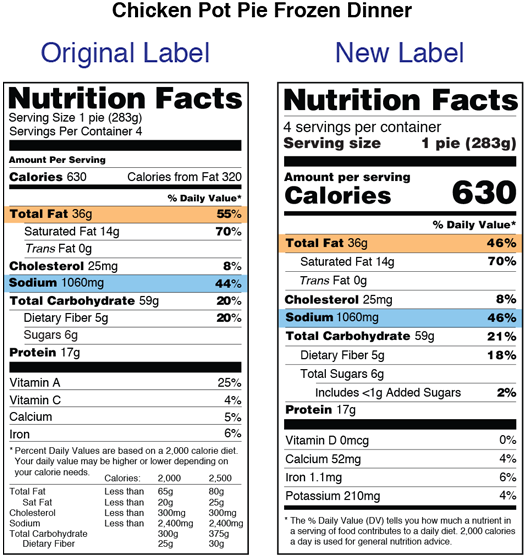
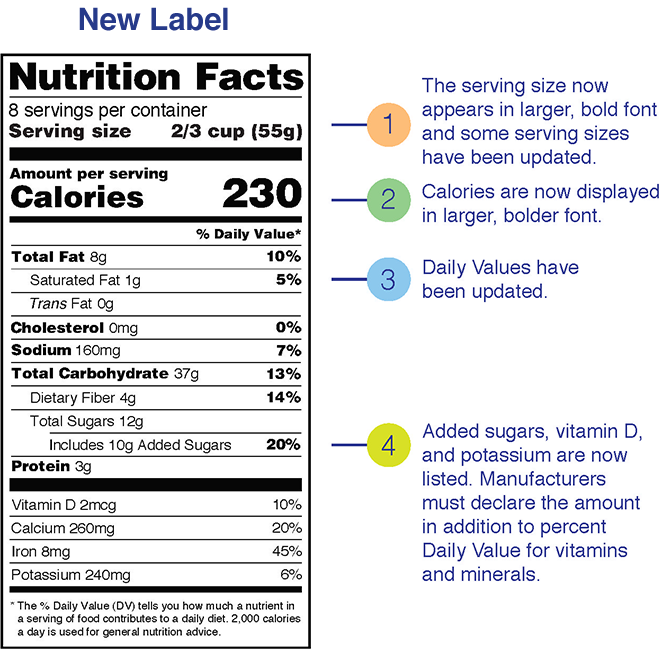

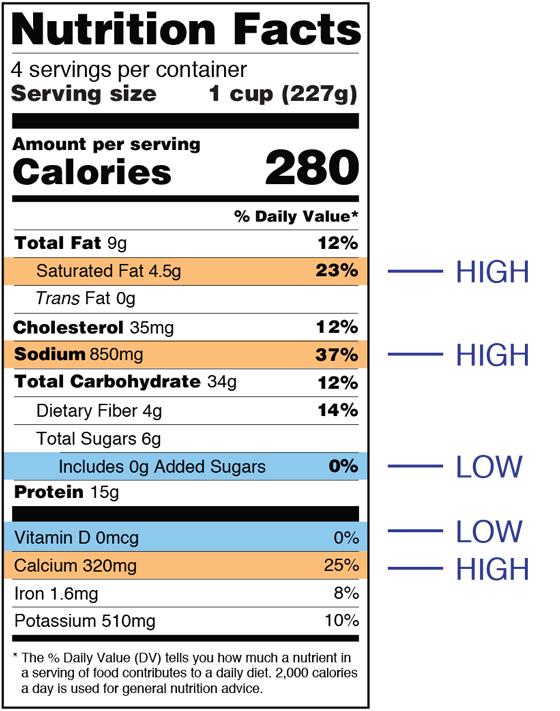
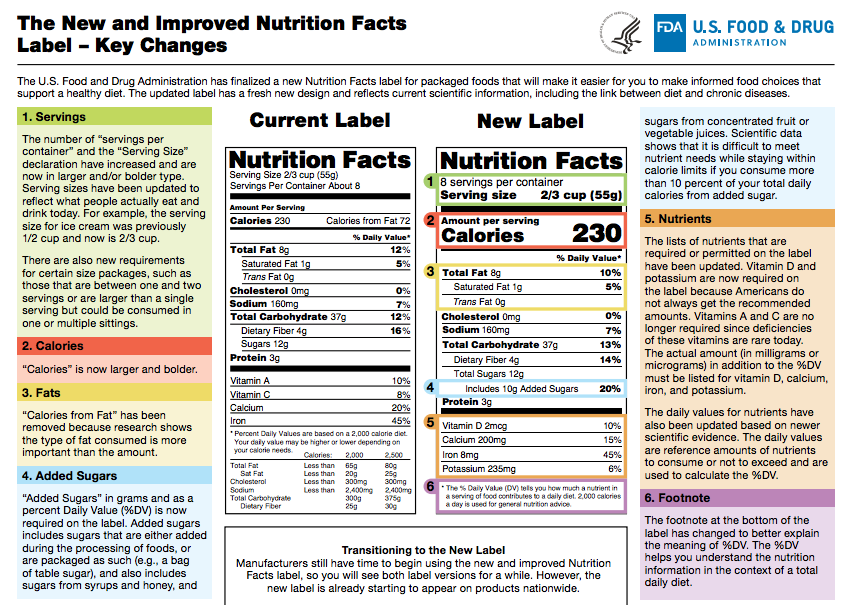
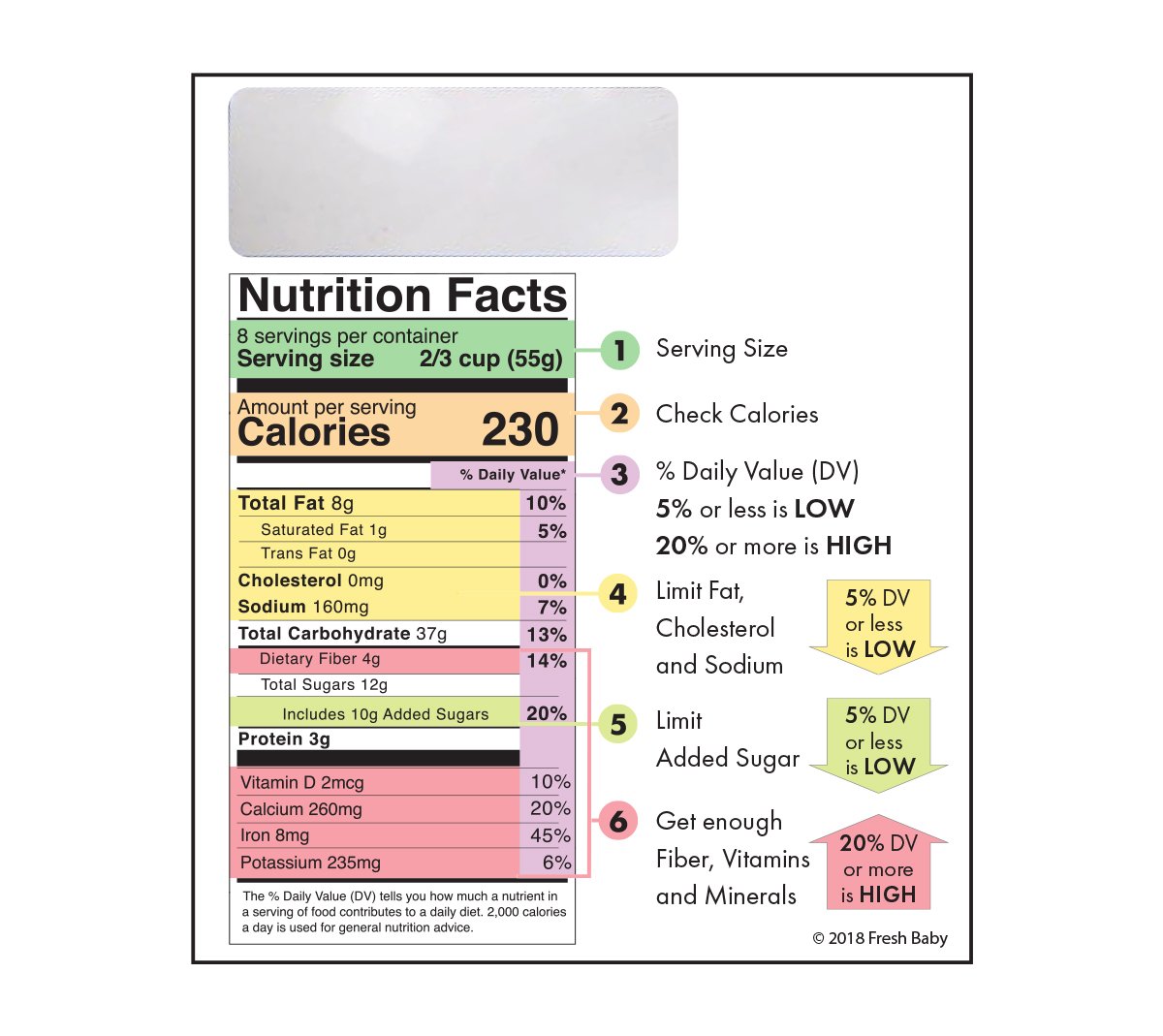



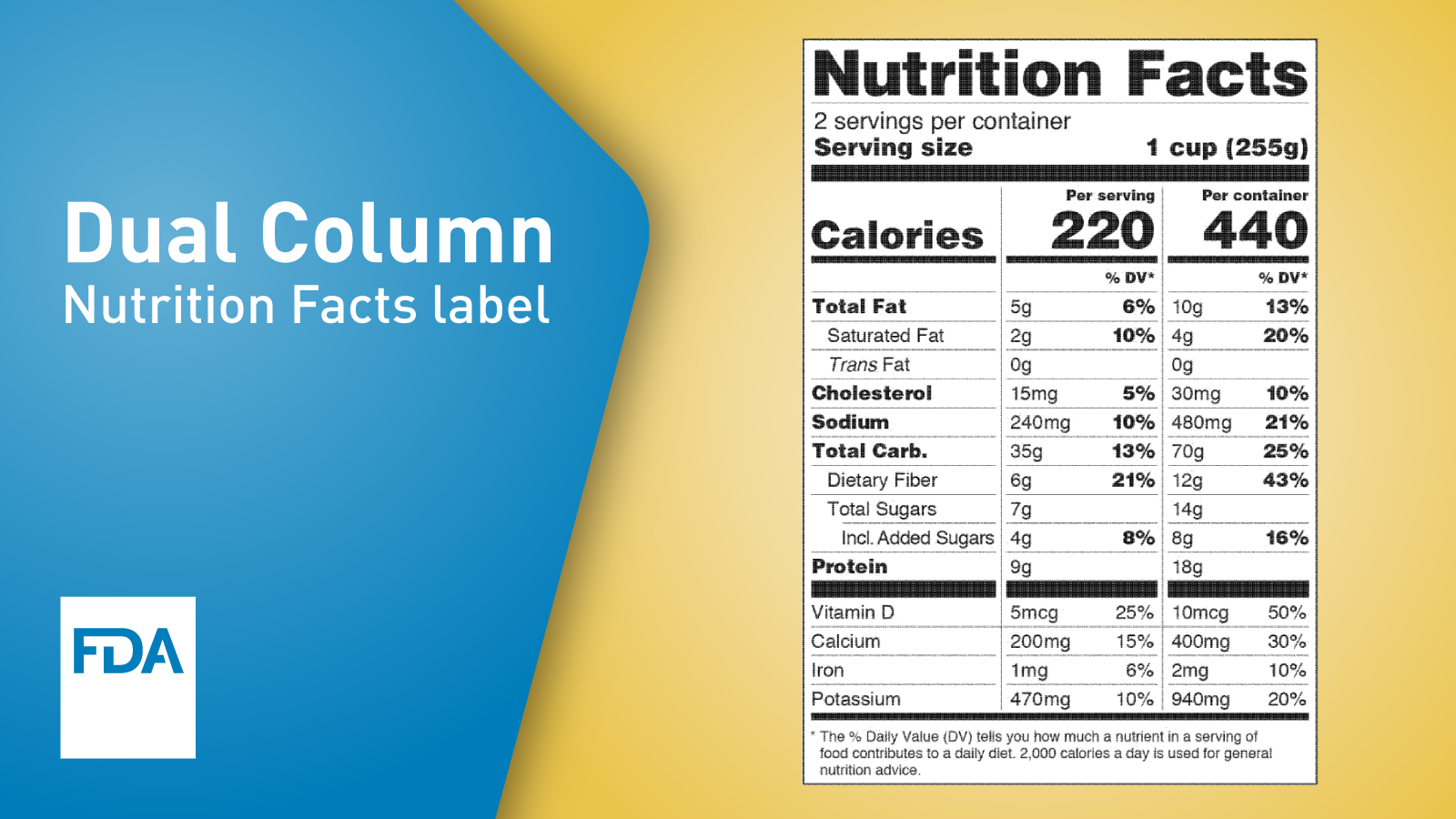
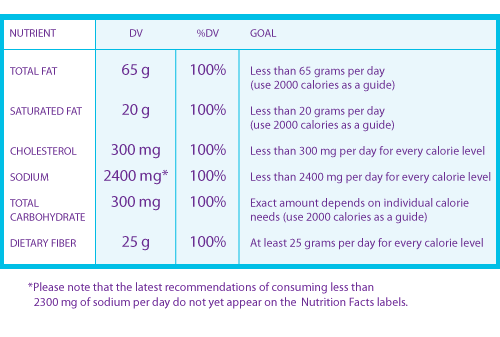
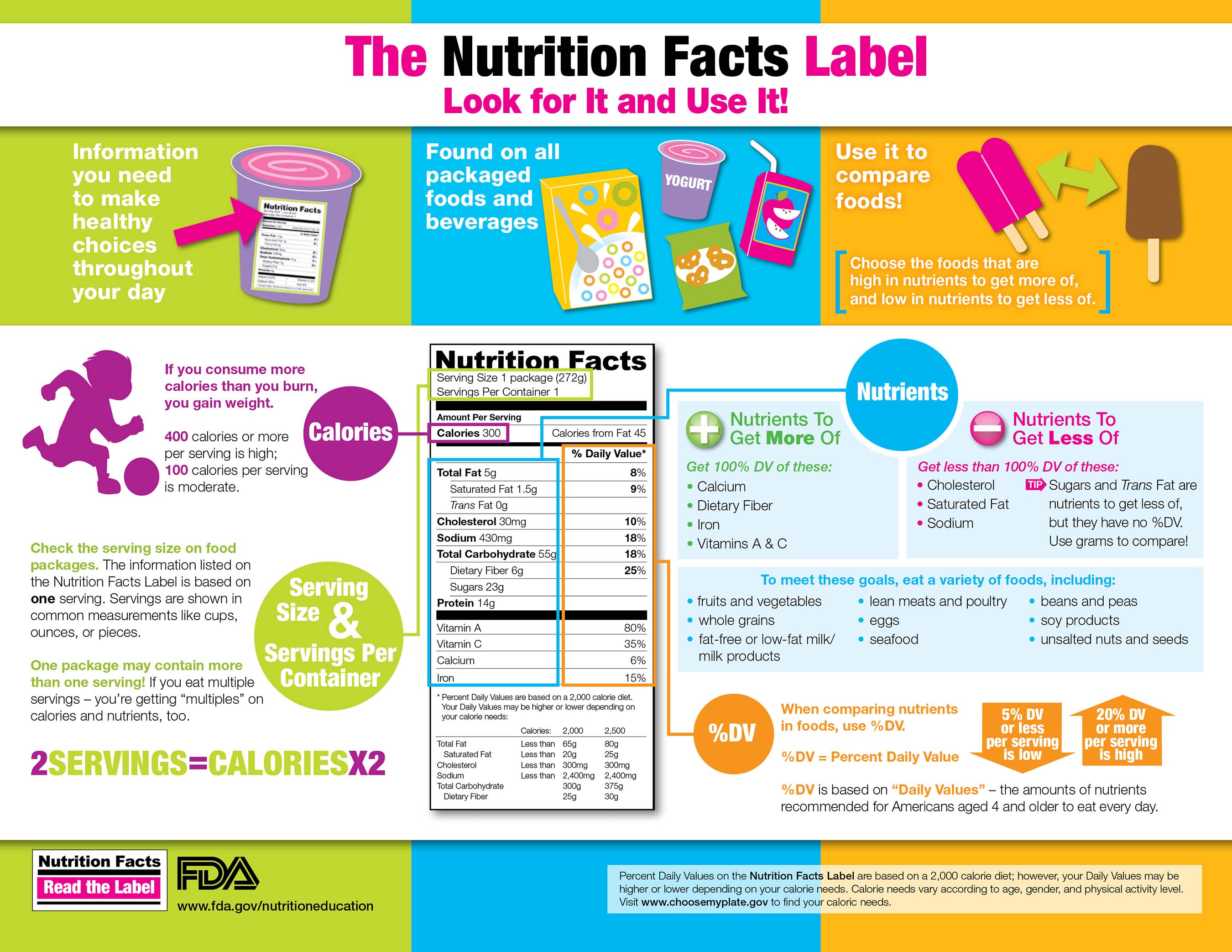

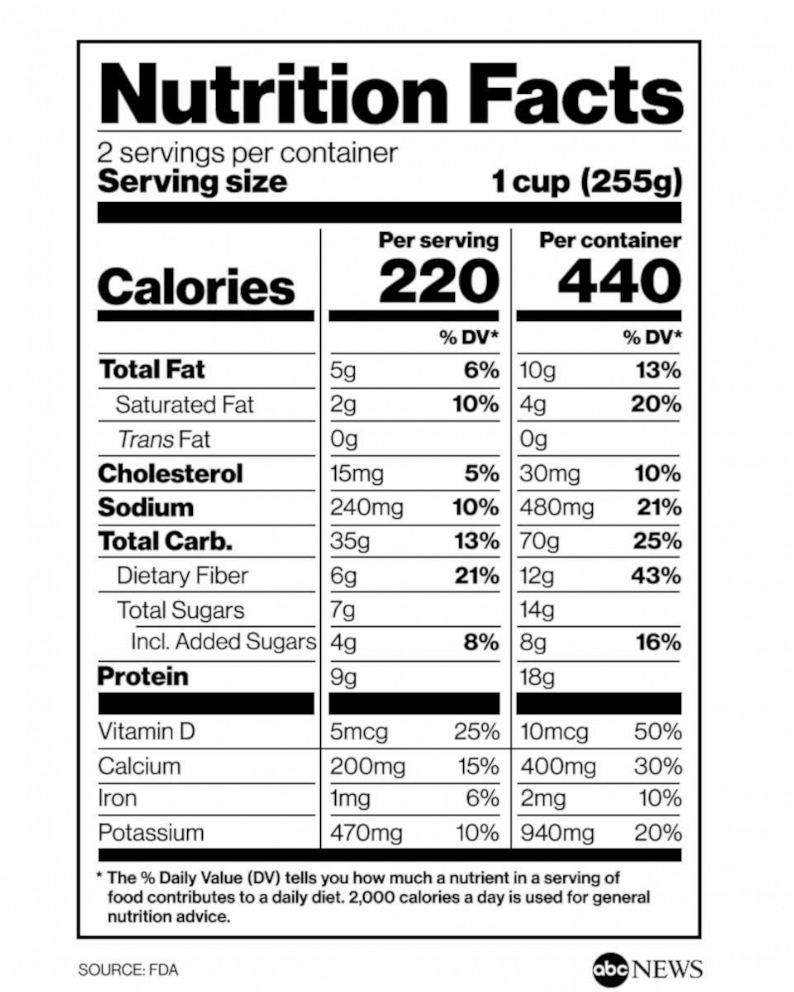


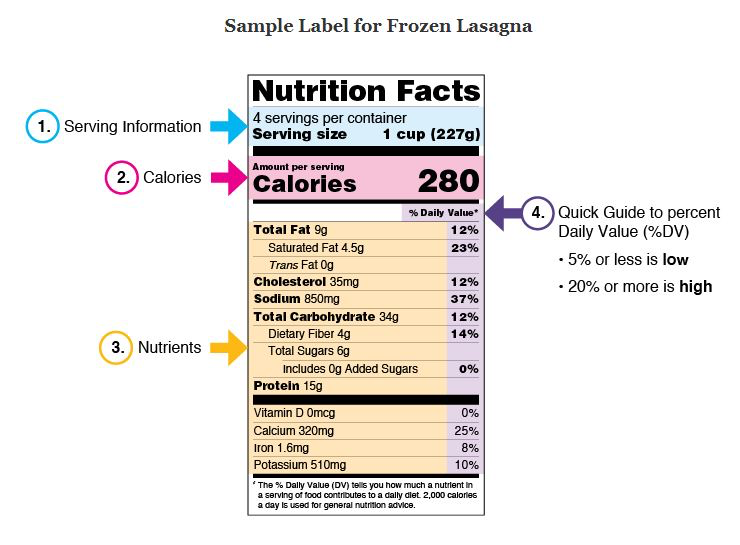
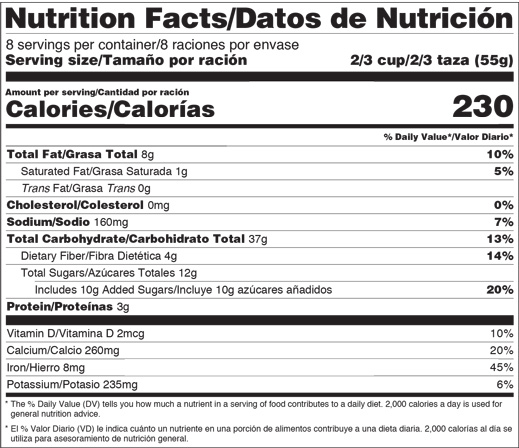




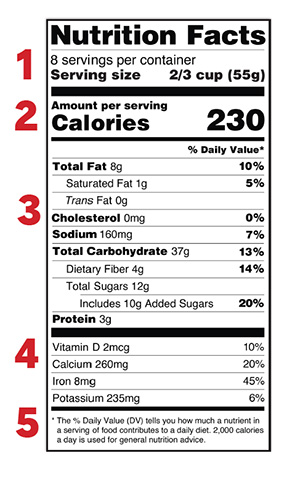
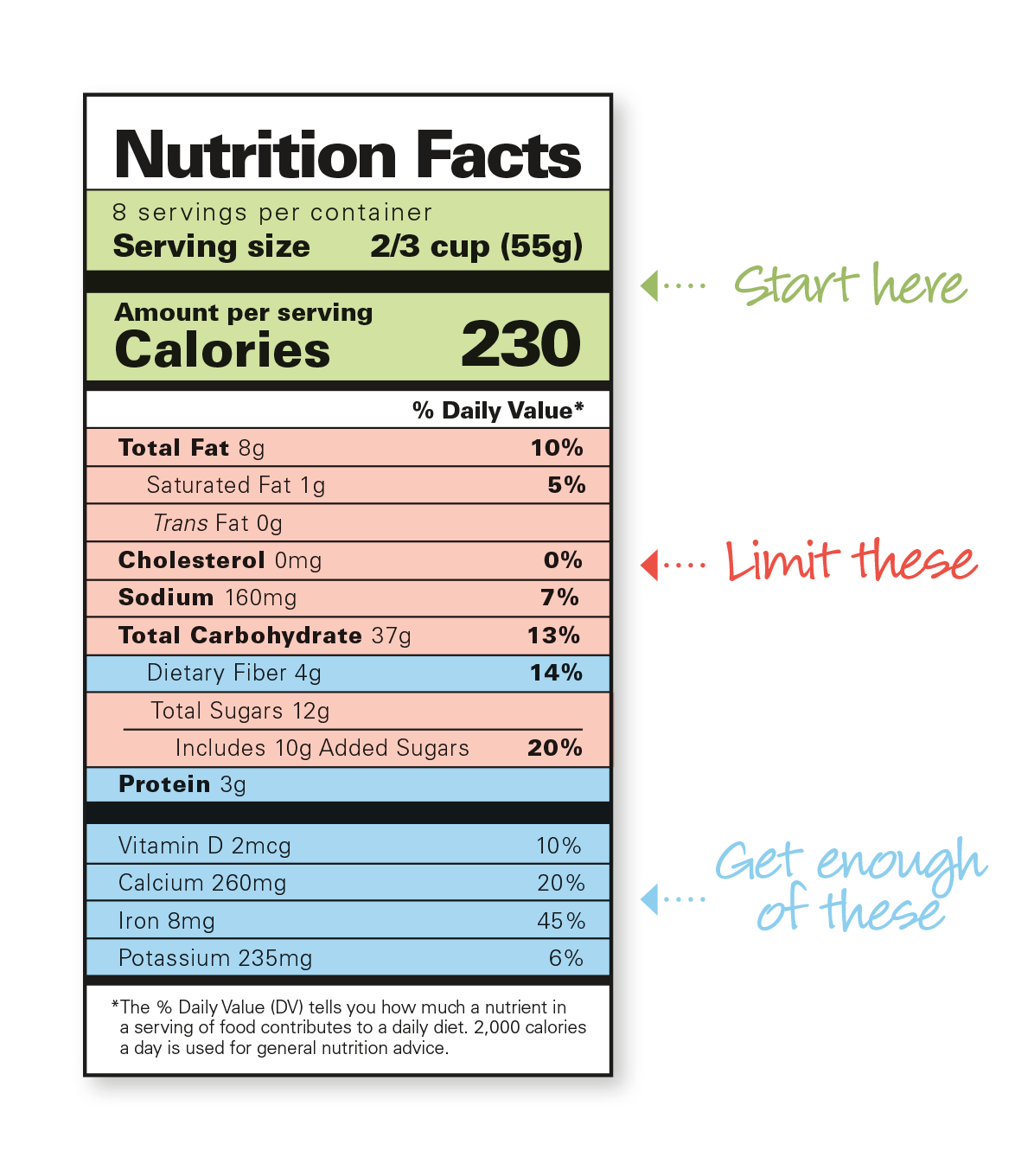
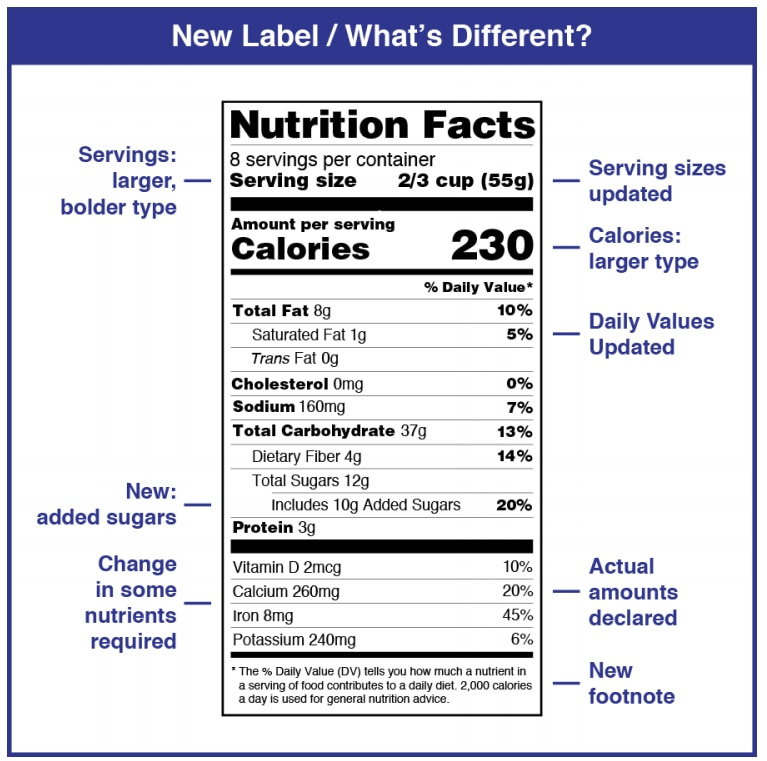
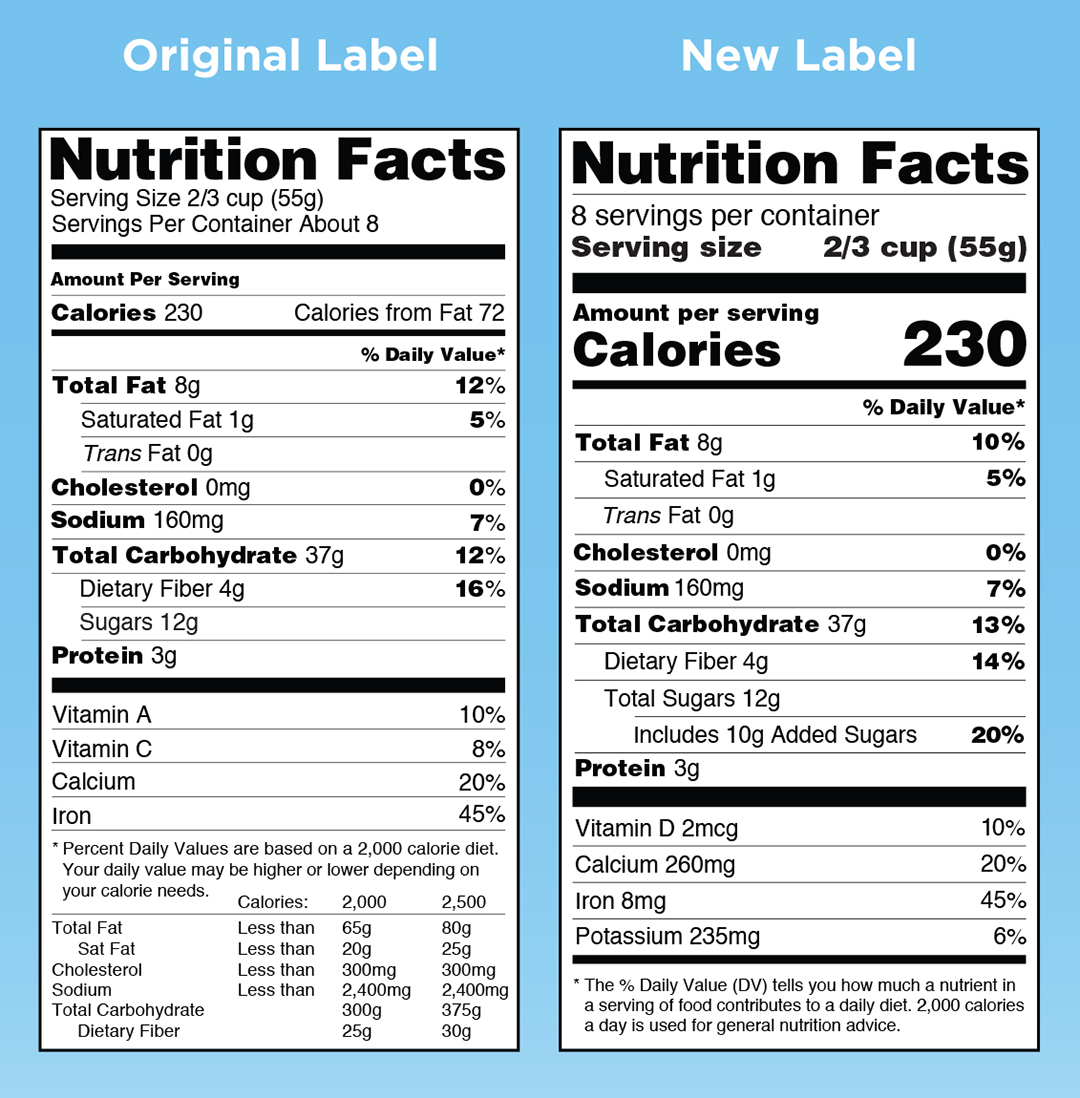
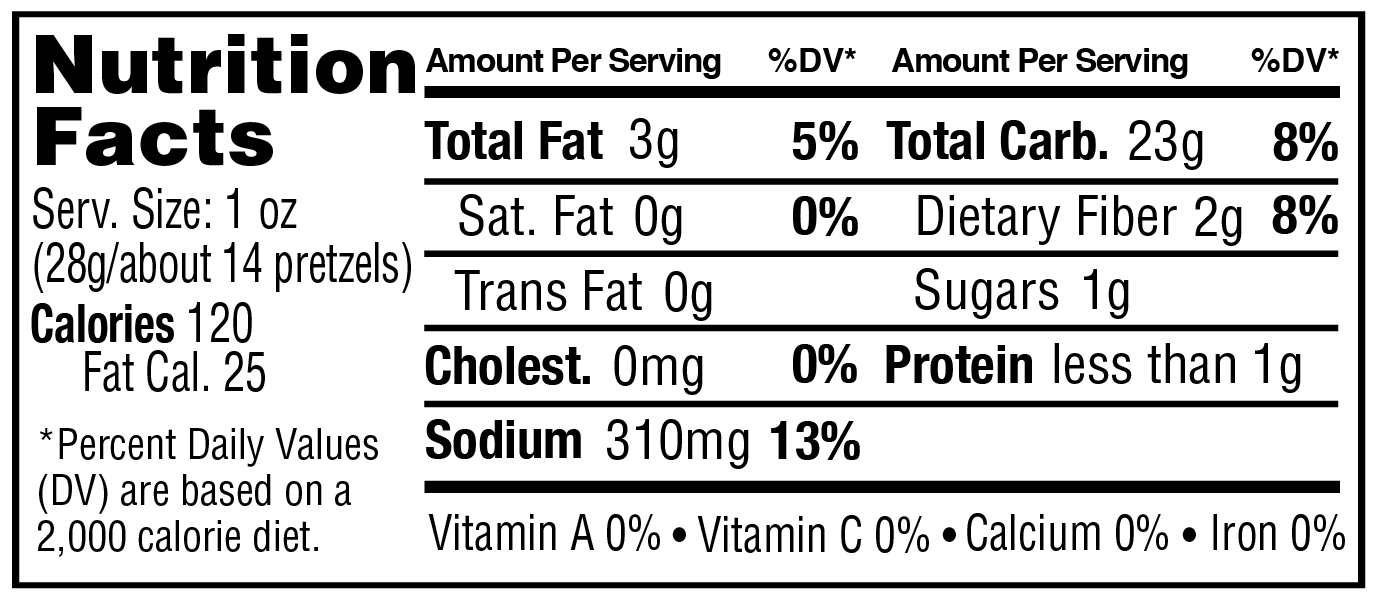

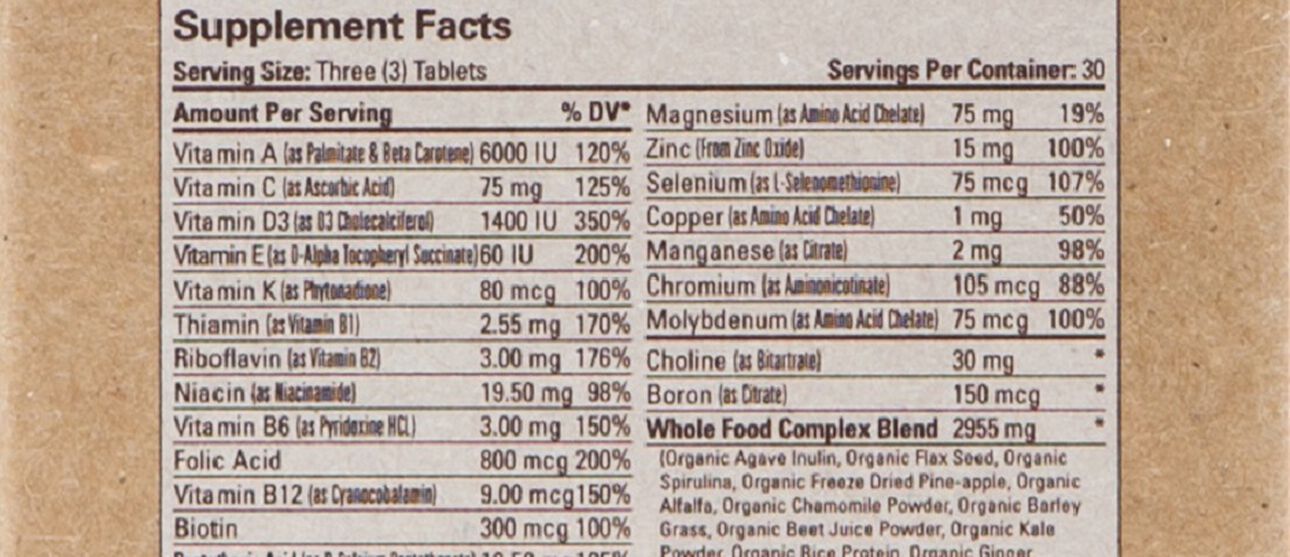

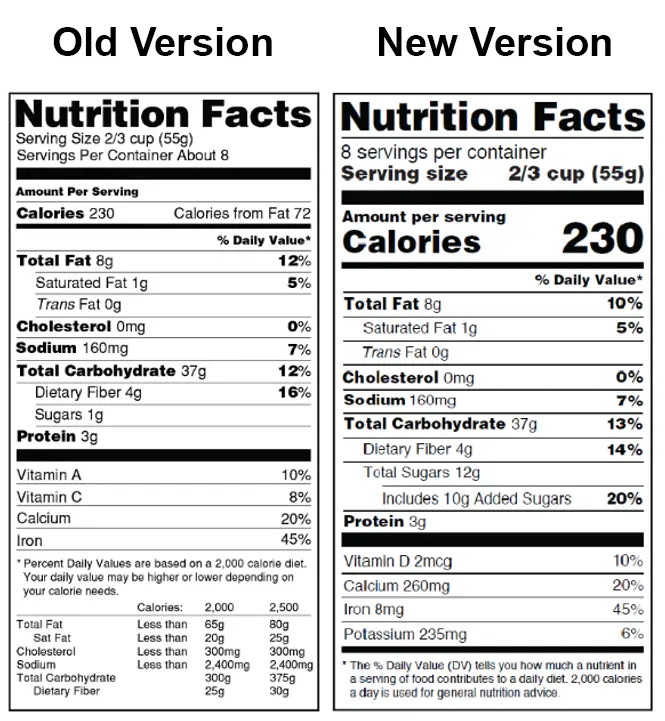


Post a Comment for "42 dv on food labels"